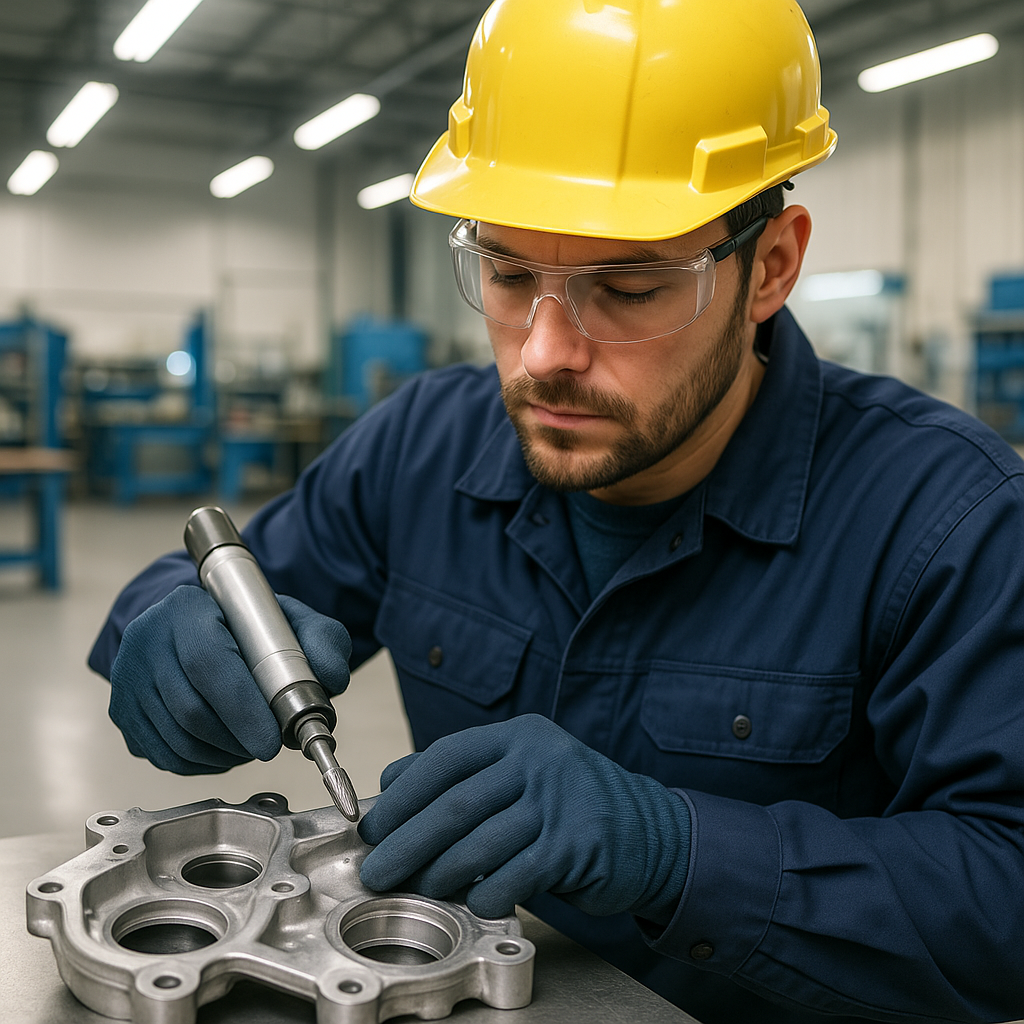How to Use Carbide Burrs Correctly
Carbide burrs are indispensable tools for anyone involved in metalworking, woodworking, jewelry making, or automotive maintenance. Whether you are a professional machinist or a passionate hobbyist, knowing how to use carbide burrs correctly is crucial to achieve high precision, prolong tool life, and ensure safety. In this comprehensive guide, we will walk you through everything you need to know about carbide burrs and offer expert tips to help you enhance efficiency and prolong the lifespan of your burrs.
What are Carbide Burrs?
Carbide burrs, also known as rotary burrs, are rotating tools used for cutting, shaping, grinding, and removing sharp edges, burrs, or excess material. They are typically made from tungsten carbide, known for its extreme hardness and durability. Carbide burrs come in various shapes, including cylindrical, spherical, oval, flame, and tree shapes, making them suitable for different applications and industries.
Why Choose Carbide Burrs?
Compared to other burr materials such as steel or high-speed steel (HSS), carbide burrs are more durable and heat resistant. This means they maintain their sharpness longer and are capable of handling tougher materials, such as steel, stainless steel, cast iron, aluminum, and even hard plastics or ceramics. For users looking for performance and longevity, carbide burrs are the top choice.
Applications of Carbide Burrs
- Deburring: Removing sharp edges or burrs after cutting.
- Shaping: Creating desired contours or forms in metal, wood, or plastic.
- Engraving: Carving intricate designs on surfaces.
- Welding preparation: Cleaning or smoothing welded joints.
- Porting: Enlarging and smoothing intake and exhaust ports in automotive cylinder heads.
- Surface finishing: Achieving a smooth finish on a workpiece.
How to Use Carbide Burrs Correctly
Using carbide burrs properly is essential, not only for cleaner results but also for the longevity of the tool and your equipment. Here’s a step-by-step guide to help you get the best performance:
1. Choose the Right Burr Shape and Size
Each burr shape is designed for a specific purpose:
- Cylindrical burrs are ideal for surface grinding and contour finishing.
- Ball or spherical burrs are best for rounding off edges and creating concave cuts.
- Tree-shaped or flame burrs work well for access to confined spaces and angled cuts.
- Oval and pointed burrs suit detail work and delicate shaping.
Selecting the right size is also crucial – too large and you risk removing too much material, too small and the task becomes inefficient.
2. Select the Appropriate Speed
Carbide burrs work best at high speeds. The ideal RPM depends on the burr size—smaller burrs require higher speeds (up to 35,000 RPM), while larger burrs need slower speeds (below 15,000 RPM). Too low an RPM can cause the burr to catch or chatter, while excessive speed can cause heat buildup and premature wear.
Tip: Always refer to the manufacturer’s RPM recommendations.
3. Use the Correct Handpiece or Tool
Carbide burrs are compatible with rotary tools such as die grinders, Dremel tools, or other similar rotary hand tools. Make sure your tool’s collet matches the shank size of the burr, and the tool can reach the necessary RPM for effective operation.
4. Maintain Proper Pressure and Movement
- Do Not Force the Burr: Let the tool do the work. Applying too much pressure can damage both the burr and workpiece.
- Use Smooth, Steady Motions: Avoid dwelling in one spot. Keep the burr moving to prevent heat buildup and material damage.
- Work Against the Burr’s Rotation: Moving against the direction of rotation often provides better control and material removal.
5. Ensure Good Workpiece Support
Secure your workpiece firmly before starting. A moving workpiece can cause chatter, damage, or injuries.
6. Wear Appropriate Safety Gear
Safety cannot be emphasized enough. Always wear:
- Safety goggles or face shields to protect against flying debris.
- Gloves for hand protection.
- Respiratory protection if working with materials that create hazardous dust.
7. Clean and Store Burrs Properly
After use, clean your carbide burrs with a stiff brush or compressed air to remove material build-up. Store them in a secure, organized location to prevent damage and ensure the cutting edges remain sharp.
Common Mistakes to Avoid
- Using dull burrs: Always replace burrs when they become blunt to avoid rough finishes and excessive wear on your tool.
- Skipping safety gear: Never underestimate the risks of flying particles or sharp debris.
- Applying excessive force: This leads to heat build-up, tool breakage, and possible injury.
- Using the wrong burr for the job: Not all shapes work for every application.
Conclusion
Learning how to use carbide burrs correctly will improve your workflow, boost productivity, and extend the life of your tools and workpieces. By selecting the appropriate burr, tool, and speed—and following best practices for safety and maintenance—you’ll get the outstanding results demanded by professionals everywhere.
For a full range of high-quality carbide burrs and expert advice, visit fitcarbidepro.com today to power your projects with precision and efficiency!

